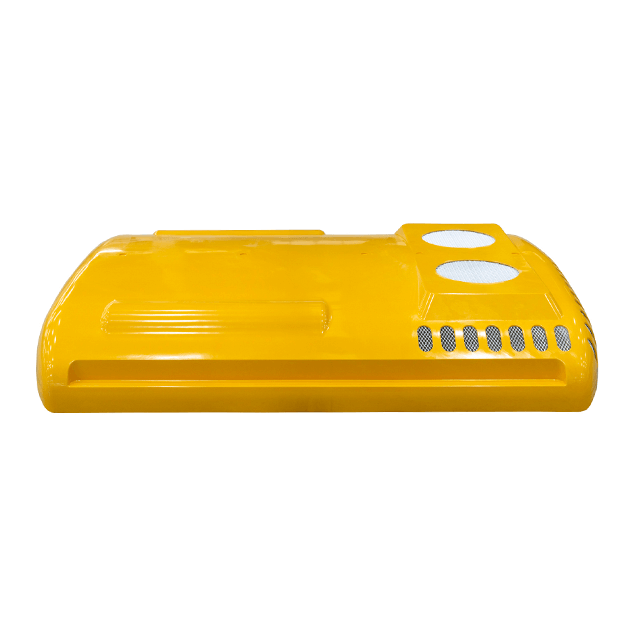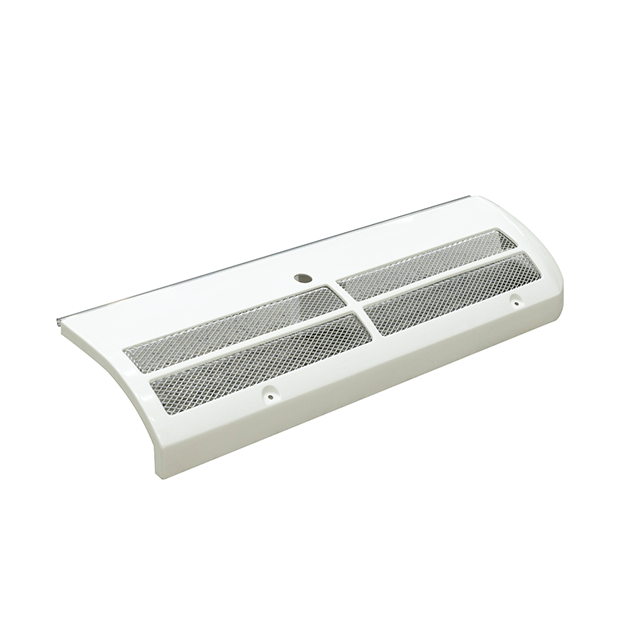Views: 0 Author: Site Editor Publish Time: 2025-10-17 Origin: Site









Resin Transfer Molding (RTM) is revolutionizing composite manufacturing. But what makes it so effective? The answer lies in the materials used, especially Fiberglass RTM from China, Fiberglass RTM Manufacturer & Supplier - Jianan. Selecting the right resin and reinforcement is crucial for achieving optimal mechanical properties and surface finish. In this article, you'll learn about the key materials used in RTM, including resins and reinforcements, and their importance in the process."
Resin Transfer Molding (RTM) relies heavily on the selection of proper resin to achieve desired mechanical properties, surface finish, and processing efficiency. Several resin types are commonly used in RTM, each offering unique advantages suited to different applications.
Polyester resin is the most widely used resin in RTM. It features low viscosity, enabling easy injection and good fiber wetting at room temperature. This resin type is relatively low cost and cures quickly, making it suitable for mass production of automotive parts, boat hulls, and general-purpose composites.
● Advantages: Low viscosity, cost-effective, fast curing
● Limitations: Moderate mechanical properties, lower heat resistance
Polyester resin is often preferred for products where budget and production speed are priorities over extreme performance.
Epoxy resin offers superior mechanical strength, adhesion, and chemical resistance compared to polyester. It cures at room temperature or with moderate heating, though it tends to have higher viscosity, which can affect flow during RTM.
● Advantages: High strength, excellent bonding, good environmental resistance
● Limitations: Higher cost, longer curing times, more sensitive to processing conditions
Epoxy resins are ideal for aerospace, defense, and high-performance automotive components requiring durability and structural integrity.
Phenolic resin is known for its excellent fire resistance, low smoke emission, and high thermal stability. It is less common in RTM but used where fire retardancy and heat resistance are critical, such as in aerospace interiors and electrical components.
● Advantages: Fire retardant, good thermal stability, chemical resistance
● Limitations: Higher viscosity, more complex curing, brittleness
Phenolic resins require careful process control but provide safety benefits in demanding environments.
Polyimide resin is a high-performance resin used in advanced RTM applications needing extreme heat resistance and mechanical properties. It withstands temperatures above 300°C and maintains structural integrity under harsh conditions.
● Advantages: Exceptional thermal stability, excellent mechanical strength
● Limitations: Very high cost, complex processing, limited availability
Polyimide resins find use primarily in aerospace and electronics where performance justifies cost.
Choose resin based on your product’s performance needs and production scale; polyester suits cost-effective runs, epoxy fits high-performance parts, phenolic excels in fire safety, and polyimide meets extreme heat demands.
Reinforcement materials are essential in Resin Transfer Molding (RTM) as they provide strength, stiffness, and durability to the final composite product. The choice of reinforcement impacts mechanical properties, weight, cost, and application suitability. Several fibers and materials are commonly used in RTM, each with unique characteristics.
Glass fiber is the most widely used reinforcement in RTM due to its excellent strength-to-cost ratio. It offers good tensile strength, corrosion resistance, and electrical insulation. Glass fibers come in various forms such as chopped strand mats, woven roving, and stitched fabrics.
● Advantages: Affordable, good mechanical properties, chemically resistant
● Applications: Automotive parts, boat hulls, construction panels
Glass fiber is versatile and suits many general-purpose RTM applications, especially where cost efficiency is important.
Carbon fiber offers superior strength, stiffness, and lightweight properties compared to glass fiber. It has excellent fatigue resistance and thermal stability but comes at a higher cost. Carbon fibers are often used in aerospace, high-performance automotive, and sporting goods.
● Advantages: High strength-to-weight ratio, excellent stiffness, fatigue resistance
● Applications: Aerospace components, racing cars, high-end sporting equipment
Carbon fiber reinforcements are usually woven fabrics or unidirectional tapes tailored for specific load directions.
Aramid fibers, such as Kevlar, provide high impact resistance and toughness. They have good tensile strength and are lightweight but are more sensitive to UV light and moisture. Aramid is often used in defense, ballistic protection, and mechanical equipment.
● Advantages: High impact resistance, good tensile strength, lightweight
● Applications: Body armor, helmets, aerospace interiors
Aramid fibers can be combined with glass or carbon fibers to balance properties and cost.
Graphite fiber is similar to carbon fiber but with a higher modulus, meaning it is stiffer but less flexible. It is used in applications requiring extreme rigidity and dimensional stability.
● Advantages: Very high stiffness, thermal conductivity
● Applications: Precision instruments, aerospace structures
Graphite fibers are less common in RTM due to cost and handling complexity but are chosen for specialized applications.
Silicon carbide fibers are ceramic-based reinforcements offering exceptional thermal resistance and hardness. They are used in high-temperature environments and wear-resistant components.
● Advantages: High temperature tolerance, wear resistance, chemical stability
● Applications: Aerospace, defense, industrial machinery
Silicon carbide fibers are often combined with other reinforcements to enhance composite properties under extreme conditions.
Match reinforcement fiber type to your product’s performance needs; use glass fiber for cost-effective strength, carbon fiber for lightweight high strength, aramid for impact resistance, graphite for stiffness, and silicon carbide for high-temperature durability.

Fiber Reinforced Plastic (FRP) molds are widely used in RTM due to their balance of strength, cost, and ease of fabrication. Typically, these molds consist of a 7-10 mm thick FRP layer reinforced by a steel box frame for added rigidity. The total thickness usually reaches about 20 mm to withstand injection pressures during molding.
The mold surface must resist heat and chemicals to maintain durability and product quality. Inferior resins in mold construction shorten mold life and degrade finished parts. Therefore, high-quality resins are essential for the mold surface layer.
Vinyl ester resin is the preferred choice for RTM mold surfaces. It offers superior heat resistance and chemical stability compared to traditional epoxy resins. This resin type extends mold life significantly—some vinyl ester molds have been used for over 18,000 molding cycles while maintaining performance.
The resin’s resistance to heat and chemicals helps maintain surface smoothness and dimensional accuracy, critical for high-quality RTM parts. Vinyl ester also bonds well with gel coats, improving mold surface finish.
Controlling mold temperature is vital for optimizing resin curing time and production efficiency. Resin curing speed doubles approximately every 10°C increase in mold temperature.
Common heating methods include:
● Electric Heating Cloths: These flexible mats wrap around or embed into molds, providing uniform heat up to about 75°C. They are easy to install and control.
● Liquid Heating Systems: Hot fluid circulates through embedded channels in the mold, allowing precise temperature control and cooling capabilities. This method suits larger molds where uniform heat distribution is crucial.
Heating molds reduces gel time drastically. For example, a part taking 60 minutes to cure at 20°C can be demolded in about 7.5 minutes at 50°C, greatly boosting production rates.
Sealing the mold edges prevents resin leakage during injection and maintains vacuum integrity in vacuum-assisted RTM processes.
Seal types include:
● Passive Seals: Solid silicone rubber strips compressed 1.0-1.5 mm when the mold closes. They provide effective sealing but require precise hardness and compression settings to avoid mold deformation.
● Dynamic Seals: These silicone seals elastically deform with mold movement, maintaining consistent pressure and reducing wear. They can accommodate cross-sectional changes up to 4 mm, improving seal longevity and performance.
Silicone materials are favored for their high temperature resistance and elastic recovery. Proper seal maintenance ensures over 1,000 molding cycles before replacement.
Use vinyl ester resin for mold surfaces to maximize mold life and surface quality, and incorporate controlled heating systems to accelerate curing and improve production efficiency in RTM processes.
Resin Transfer Molding (RTM) has evolved to include specialized techniques that improve resin flow, fiber impregnation, and final part quality. These methods address challenges like porosity, fiber compaction, and cycle time, expanding RTM’s use across industries.
VARIM uses vacuum pressure to pull resin into the fiber preform inside a closed mold, enhancing resin flow and reducing voids. Unlike traditional RTM, which relies on injection pressure alone, VARIM combines vacuum and injection to improve fiber wetting and resin distribution.
● How it works: The mold is sealed, and vacuum applied to evacuate air. Resin is introduced at the inlet, and vacuum pulls it through the reinforcement.
● Benefits: Fewer air pockets, better fiber impregnation, and higher fiber volume fractions.
● Applications: Large, complex parts like wind turbine blades, automotive panels, and aerospace components.
VARIM reduces the risk of dry spots and improves mechanical performance by ensuring thorough resin penetration.
TERTM adds heat to the mold and preform during resin injection to cause core materials to expand. This thermal expansion compresses fiber layers, enhancing compaction and reducing porosity.
● Process: After resin injection, the mold heats up, causing the core or inserts to expand slightly.
● Advantages: Improved fiber volume fraction, reduced void content, and enhanced surface finish.
● Use cases: High-performance aerospace parts and structural components needing tight dimensional tolerances.
Heating also lowers resin viscosity, helping it flow better into dense fiber mats.
RARTM replaces traditional core materials with rubber inserts or bladders inside the mold. These rubber elements apply pressure internally during curing, compacting fibers and minimizing porosity.
● Mechanism: Rubber inserts expand or press against the fiber preform as resin cures.
● Key benefits: Achieves very high fiber content (up to 60-70%), reduces internal voids, and improves mechanical strength.
● Typical applications: Defense equipment, aerospace parts, and mechanical components requiring high structural integrity.
RARTM is especially useful when conventional core materials cannot provide sufficient compaction or when complex geometries demand flexible internal pressure sources.
Select specialized RTM techniques based on part complexity and performance needs; VARIM excels for large, intricate parts, TERTM improves compaction via heat expansion, and RARTM uses internal rubber pressure to maximize fiber density and reduce voids.
Resin Transfer Molding (RTM) is a powerful process but faces some common challenges. Understanding these issues and how to solve them is key to producing high-quality parts consistently.
Sometimes the surface of RTM parts turns rough or dull instead of smooth and glossy. This often happens due to a buildup of mold residue or contamination. Over time, the mold surface can accumulate cured resin or dirt, creating a "mucous membrane" effect that makes the part's surface rough.
Solution: Regular mold cleaning is essential. Use fine sandpaper or water sand to polish rough spots, then wipe the mold with acetone to remove residues. Finally, apply a fresh coat of release agent to restore smoothness. This routine keeps the mold surface in top condition and ensures shiny finished parts.
Wrinkles in the gel coat layer are a frequent problem. They occur when the gel coat hasn’t fully cured before resin injection. The styrene monomer in the injected resin partially dissolves the gel coat, causing it to expand and wrinkle.
Solution: Always verify complete gel coat curing before resin injection. Adjust gel coat formulation or curing time if wrinkles persist. Proper timing prevents resin from damaging the gel coat and maintains a flawless surface.
Glue or resin leakage happens when the mold isn’t sealed tightly. Gaps or cracks in the sealing gasket allow resin to escape during injection, wasting material and causing defects.
Solution: Inspect sealing gaskets before each molding cycle. Replace any damaged or worn gaskets immediately. Ensure the mold closes evenly and tightly. Use high-quality silicone seals designed for RTM molds to maintain a strong, durable seal.
Dry spots appear inside parts when resin fails to fully impregnate the fibers. This can be due to high resin viscosity, long or narrow flow paths, or contamination of reinforcement materials. Core material movement during injection also causes uneven resin flow and dry spots.
Solution: Adjust resin viscosity by controlling temperature or selecting a different resin system. Optimize mold flow channels and increase the number of resin injection points to improve distribution. Check fiber materials for cleanliness and replace if contaminated. Secure core materials firmly to prevent shifting during injection by applying sufficient mold closing pressure or drilling holes to balance flow.
Maintain mold cleanliness, ensure proper gel coat cure, check seals diligently, and optimize resin flow paths to minimize defects and improve RTM part quality.

Resin Transfer Molding (RTM) is widely used across various industries due to its ability to produce high-quality composite parts with excellent surface finish, dimensional accuracy, and mechanical properties. The versatility of RTM materials and processes makes it suitable for applications requiring lightweight, strong, and complex-shaped components.
The automotive sector benefits greatly from RTM technology. RTM allows manufacturers to produce parts that are lighter than traditional metal components, helping improve fuel efficiency and reduce emissions. Common automotive RTM parts include:
● Body panels
● Structural components
● Interior parts
● Bumpers and fascia
RTM's closed mold process ensures consistent quality and surface finish, making it ideal for visible parts. The use of glass fiber reinforcements combined with polyester or epoxy resins balances cost and performance. High-pressure RTM variants enable faster cycle times, supporting mass production demands.
Moreover, RTM composites resist corrosion and impact, extending vehicle lifespan. Some manufacturers also use carbon fiber reinforcements for high-performance vehicles to reduce weight further while maintaining strength.
Aerospace demands materials that offer high strength-to-weight ratios and excellent thermal and chemical resistance. RTM meets these needs by enabling complex parts with tailored reinforcement layouts and high fiber volume fractions.
Typical aerospace RTM components include:
● Wing structures
● Fairings
● Interior panels
● Engine nacelles
Epoxy and polyimide resins are often selected for aerospace RTM parts due to their superior mechanical and thermal properties. Carbon fiber reinforcements dominate aerospace applications for their lightweight and stiffness. The RTM process also allows embedding sensors or other functional elements within composites, enhancing part capabilities.
The closed mold environment reduces emissions and improves repeatability, essential for aerospace certification and safety standards.
RTM composites are increasingly used in defense and mechanical equipment for their durability, resistance to harsh environments, and design flexibility. Applications include:
● Armor panels
● Protective helmets
● Mechanical housings
● Structural supports
Aramid fibers like Kevlar are common in defense RTM parts due to their impact resistance and toughness. Silicon carbide fibers may be used where extreme wear or heat resistance is needed.
RTM parts can be designed to meet stringent mechanical and environmental requirements, offering weight savings and corrosion resistance compared to metals. The ability to produce complex geometries also allows integration of multiple functions into a single part, reducing assembly time and cost.
When applying RTM in industry, select reinforcement and resin systems based on performance, cost, and production volume; automotive favors glass fiber and polyester or epoxy, aerospace demands carbon fiber and high-performance resins, while defense often uses aramid fibers for impact resistance.
Resin Transfer Molding (RTM) utilizes various materials like polyester, epoxy, and high-performance resins, offering unique benefits for diverse industries. Future trends in RTM focus on enhancing material properties and processing techniques to meet evolving industry demands. About Jianan - Your Trusted Fiberglass Manufacturer excels in providing advanced RTM solutions, ensuring high-quality composites with excellent mechanical properties and surface finishes. Their expertise in material selection and innovative processes delivers significant value to automotive, aerospace, and defense sectors.
A: Fiberglass RTM refers to Resin Transfer Molding using glass fiber as reinforcement. It is known for its strength-to-cost ratio and is widely used in automotive and construction applications.
A: Fiberglass RTM is more cost-effective but offers lower strength and stiffness than carbon fiber RTM, which is preferred for high-performance applications like aerospace.
A: Fiberglass RTM is chosen for its affordability, good mechanical properties, and chemical resistance, making it ideal for mass-produced parts where cost efficiency is crucial.
A: Common issues include surface roughness, wrinkling, and dry spots, often due to mold residue or incomplete gel coat curing. Regular maintenance and process adjustments can mitigate these problems.
+86 13913647707 / 13915651436


